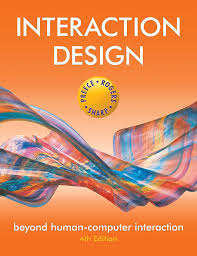White Paper: A Deep Dive into Interaction Design
Introduction
In today's digitally saturated world, the significance of interaction design cannot be overstated. It is the art and science of shaping the interaction between humans and technology, aiming to create user experiences that are intuitive, efficient, and enjoyable. This white paper delves into the core concepts of interaction design, drawing insights from the renowned "Interaction Design: Beyond Human-Computer Interaction" (4th Edition) by Preece, Rogers, and Sharp.
The Essence of Interaction Design
Interaction design, at its heart, is about understanding user needs, behaviors, and context. It involves the creation of interactive products and systems that seamlessly integrate into people's lives. Key principles of interaction design include:
- User-Centered Design: Placing the user at the center of the design process, ensuring that all decisions are made with their needs and preferences in mind.
- Affordances: Designing interfaces that clearly communicate the possible actions and interactions, reducing cognitive load and enhancing usability.
- Feedback: Providing timely and relevant feedback to users, confirming actions and guiding them through the interaction.
- Consistency: Maintaining consistency in design elements, navigation, and interaction patterns to create a familiar and predictable user experience.
- Constraints: Limiting the user's choices to prevent errors and guide them towards the intended interaction.
The Design Process
The interaction design process typically involves the following stages:
- Research and Analysis:
- User Research: Conducting interviews, surveys, and observations to understand user needs, goals, and pain points.
- Contextual Inquiry: Observing users in their natural environment to gain insights into their workflows and challenges.
- Analysis: Analyzing the gathered data to identify patterns, opportunities, and potential design solutions.
- Design:
- Conceptual Design: Creating low-fidelity prototypes to explore different design ideas and gather feedback.
- Detailed Design: Refining the design, focusing on the user interface, interaction patterns, and visual elements.
- Prototyping: Building high-fidelity prototypes to test the design with users and gather feedback.
- Implementation:
- Development: Collaborating with developers to translate the design into a functional product.
- Testing: Conducting usability testing to identify and address any usability issues.
- Evaluation:
- Usability Testing: Evaluating the product's usability through formal testing methods.
- Field Studies: Observing users in real-world settings to assess the product's effectiveness and identify areas for improvement.
The Impact of Interaction Design
Well-designed interactions can have a profound impact on various aspects of our lives. Some of the benefits of effective interaction design include:
- Enhanced User Experience: Intuitive and enjoyable interfaces that delight users.
- Increased Efficiency: Streamlined workflows that save time and effort.
- Reduced Error Rates: Clear and unambiguous designs that minimize mistakes.
- Improved Accessibility: Inclusive designs that cater to users with diverse needs and abilities.
- Competitive Advantage: Innovative and user-centric products that differentiate businesses.
The Future of Interaction Design
As technology continues to evolve, so too does the field of interaction design. Emerging trends and technologies, such as artificial intelligence, virtual and augmented reality, and the Internet of Things, are opening up new possibilities for creating immersive and personalized user experiences. Interaction designers will need to adapt to these changes and acquire new skills to remain relevant in the future.
Conclusion
Interaction design is a crucial discipline that shapes the way we interact with technology. By understanding the principles and processes of interaction design, we can create products and systems that are not only functional but also delightful to use. As we move forward, it is essential to embrace user-centered design, continuous improvement, and emerging technologies to ensure that our interactions with technology remain seamless and enriching.
References
- Preece, J., Rogers, Y., & Sharp, H. (2015). Interaction Design: Beyond Human-Computer Interaction (4th ed.). Wiley.
Additional Resources
- Nielsen Norman Group: https://www.nngroup.com/
- Interaction Design Foundation: https://www.interaction-design.org/
Note: To make this white paper even more persuasive, consider incorporating specific examples of successful interaction design, such as Apple's intuitive user interfaces or Google's seamless search experience. Additionally, you can include visuals, such as diagrams and screenshots, to illustrate key concepts and enhance the overall presentation. Contact ias-research.com



